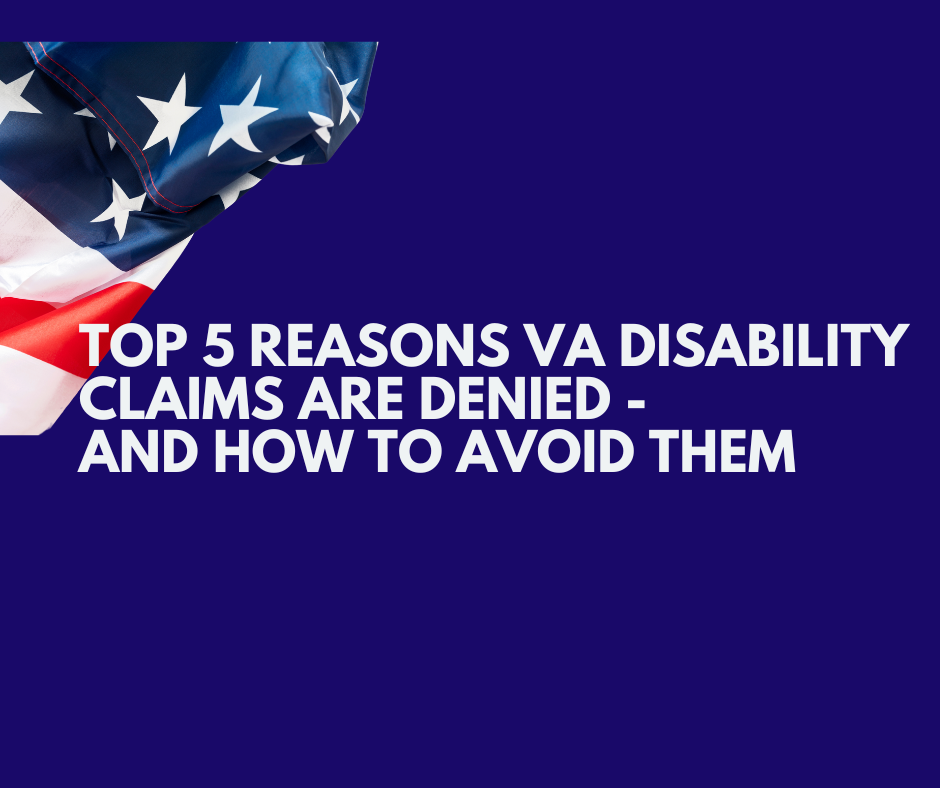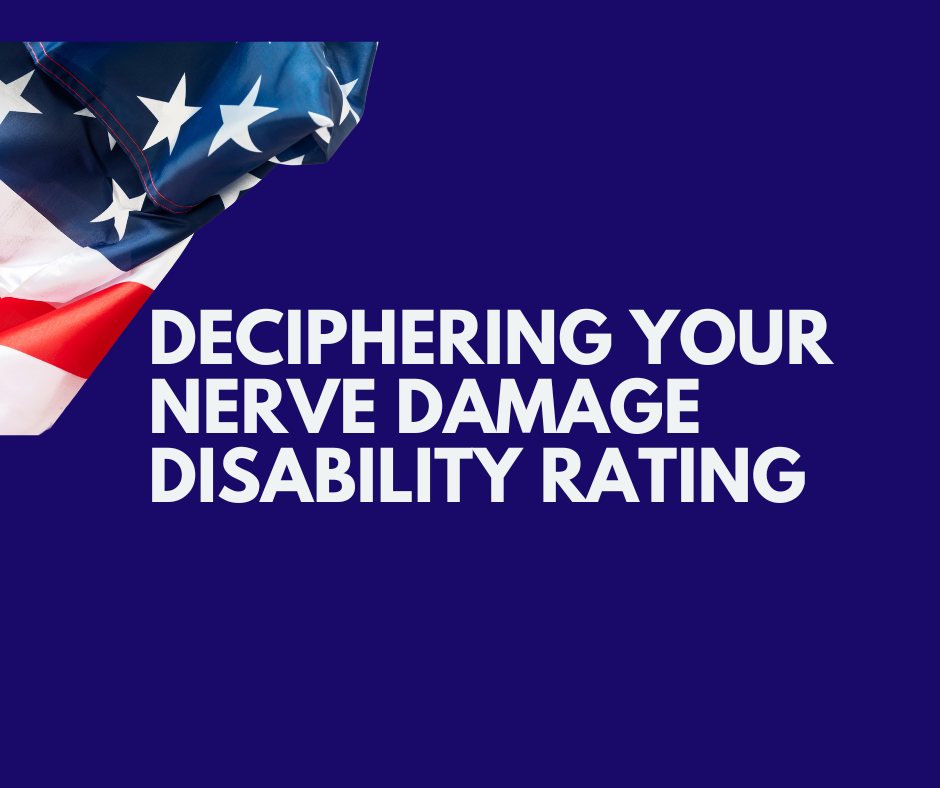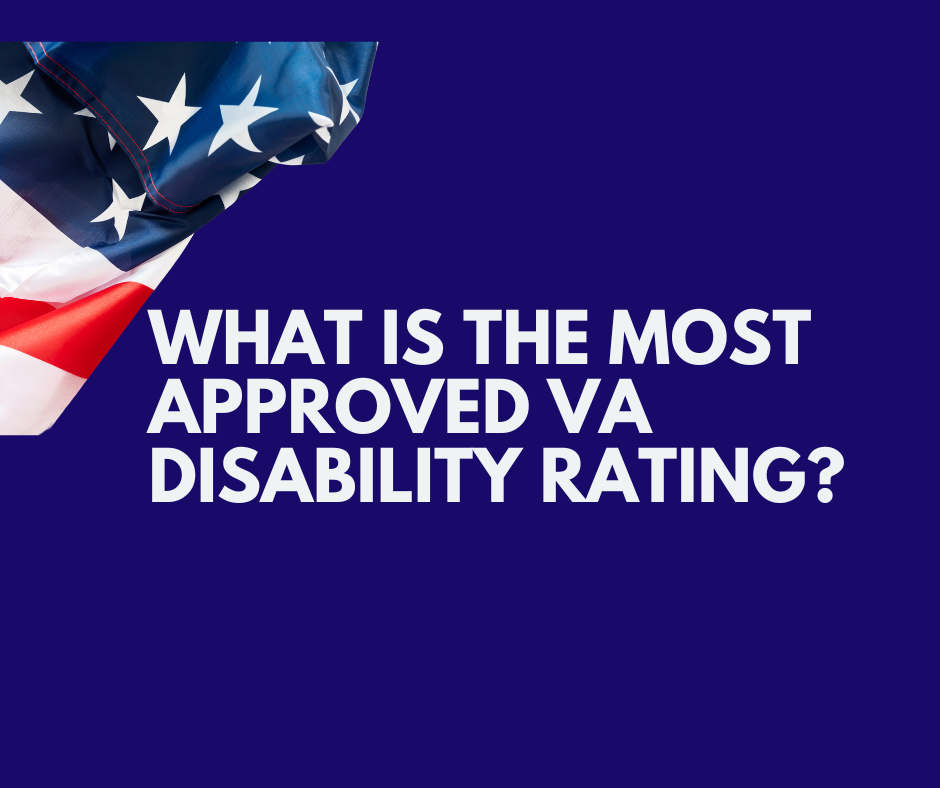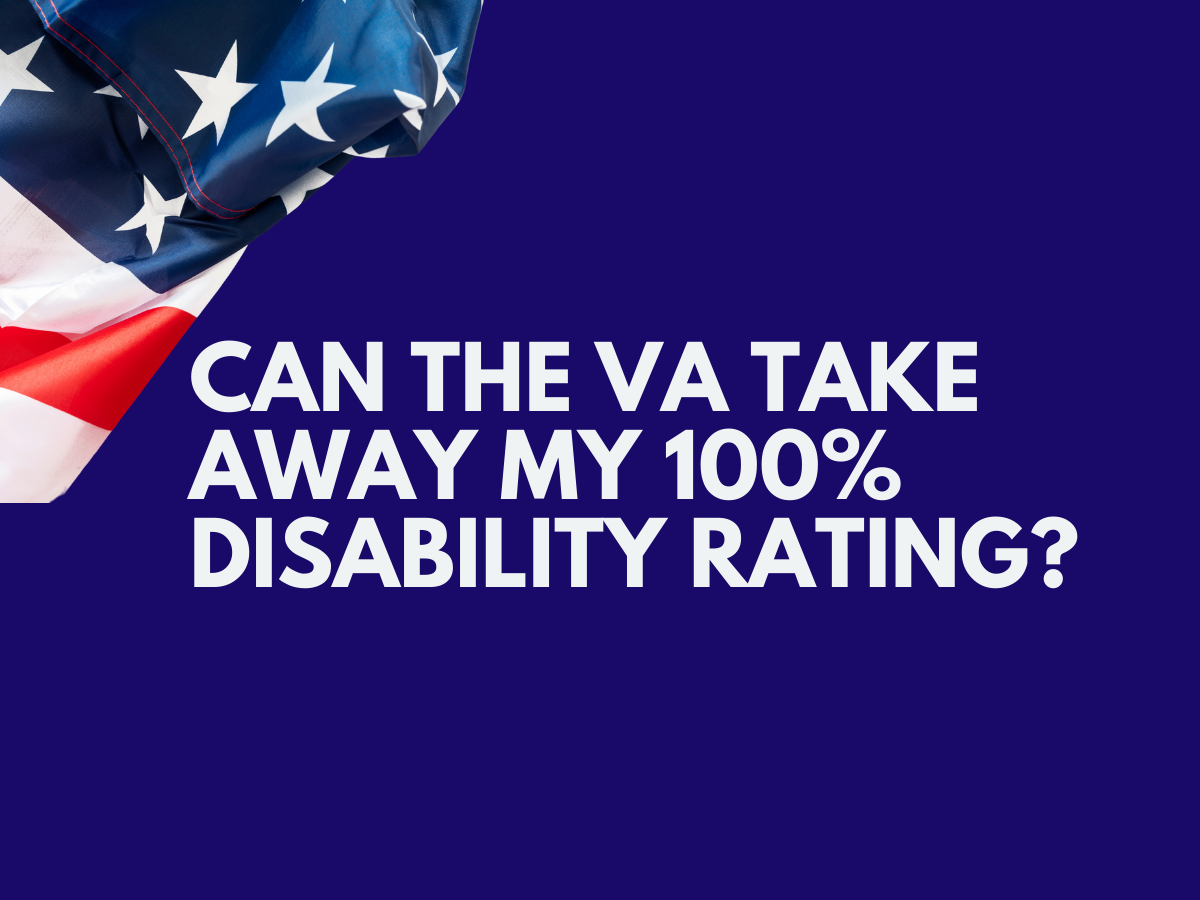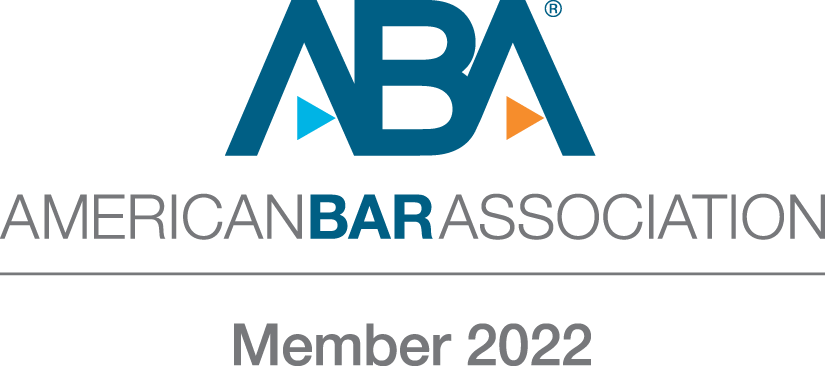Applying for veterans’ disability compensation can be a complex and overwhelming process. It is essential to navigate the system with care and avoid common mistakes that could potentially hinder your chances of receiving the compensation you deserve. In this comprehensive guide, we will explore the most common mistakes veterans make when applying for disability compensation. By understanding and avoiding these pitfalls, you can maximize your chances of a successful claim and ensure that you receive the benefits you are entitled to.
Failing to Gather Sufficient Medical Evidence
One of the most crucial aspects of a successful disability claim is the presentation of thorough and compelling medical evidence. Many veterans make the mistake of not gathering enough evidence or failing to provide the necessary documentation to support their claim.
One powerful tool is obtaining a medical opinion from an expert or a nexus letter from a private healthcare provider. These documents explicitly establish the link between an in-service event and the current condition for which the veteran seeks service-connected compensation.
Relying solely on Compensation & Pension (C&P) examinations, a common mistake made by veterans, may not fully represent the true nature or extent of their disabilities. Expert opinions and nexus letters play a crucial role in providing a clearer and more accurate picture of the veteran's symptoms, potentially countering the findings of VA examiners. Veterans can seek a nexus letter from their physician or another medical provider, while accredited representatives or attorneys may assist in obtaining an expert medical opinion to serve as the nexus letter.
For a nexus letter to carry weight, it should meet the following criteria:
Written by a licensed professional in the relevant medical or clinical field.
Based on the veteran's service medical and personnel records.
Grounded in the veteran's medical history pre- and post-service.
Address whether it is "at least as likely as not" that the veteran's disability resulted from or was caused by their service.
Provide supporting rationale, showing the medical professional's reasoning and explaining how they arrived at their determination.
Another useful resource for veterans is the Disability Benefits Questionnaire (DBQ). These forms, designed specifically for the evaluation process of VA disability benefits, allow veterans or their healthcare providers to answer questions regarding various aspects of their disability, including symptoms, severity, potential cause, and its relation to other disabilities.
By leveraging these strategies, you can bolster your claims with compelling medical evidence, and increase your chances of obtaining service connection. Don't let a lack of medical evidence stand in the way of your benefits—empower yourself with expert opinions, nexus letters, and DBQs to break through the VA's denial barrier.
Not Understanding the Criteria for Service Connection or Increase Ratings
Service connection is a vital concept in veterans disability compensation claims. However, veterans often make the mistake of not fully understanding the criteria for establishing service connection or increase ratings.
When it comes to receiving service-connected compensation from the VA, three key elements must be established. Firstly, you must have a current, diagnosed condition. Secondly, you need to demonstrate an in-service event, injury, or illness. Finally, it is crucial to provide a medical nexus that connects your current condition to the in-service event. However, establishing these elements can be challenging. Veterans must familiarize themselves with what the VA looks for when adjudicating their disability claims.
Veterans may find it frustrating when their service records indicate an in-service event, yet they do not receive benefits. It is important to understand that for benefits to be granted, the condition must be current and diagnosed. This means that a medical professional must confirm the existence of the condition.
For instance, suppose a veteran's service records show repeated head injuries or head injury residuals. Without a current diagnosis that verifies the veteran's experience of head injury residuals after their service, disability benefits will not be awarded. Additionally, the veteran would need a nexus letter linking the head injury residuals to the repeated head injuries that occurred during service.
In cases of increased rating claims, veterans should have a clear understanding of how their disability is rated under diagnostic codes. To receive an increased VA rating, veterans must demonstrate that their disability meets the specific criteria outlined for an increased rating.
For example, let's consider a veteran who is currently service-connected at the 30 percent level for headaches and seeks an increased rating to the 50 percent level. The 30 percent rating indicates that the VA acknowledges the veteran's headaches are typically "prostrating" and occur, on average, once a month over several months. To be awarded the increased rating, the veteran must demonstrate that their headaches occur with "very frequent completely prostrating and prolonged attacks productive of severe economic inadaptability." If the veteran does not meet these criteria or cannot provide sufficient evidence, the increased rating will not be awarded by the VA.
While it may seem evident to veterans and their families that their condition is related to their service, it is crucial to establish the condition as service-connected to receive compensation. Establishing the three elements of service connection is essential for the VA to recognize that the condition was caused or exacerbated by service. Similarly, demonstrating entitlement to an increased rating requires meeting the specific criteria outlined in the diagnostic criteria.
By understanding these elements and criteria, you can better navigate the process of obtaining service-connected compensation. Properly establishing service connection and meeting the requirements for an increased rating are key to unlocking the benefits you deserve.
Lack of Clarity and Detail in Claim Documentation
Submitting a well-documented and well-organized disability claim is crucial for success. Unfortunately, many veterans make the mistake of being vague or incomplete in their claim documentation. A veteran must include clear and detailed information about his/her disabilities, including the specific symptoms, limitations, and its impact on daily life.
It is crucial for veterans to exercise caution and ensure that the records they submit to the VA are directly related to the conditions for which they are seeking service connection. Including extraneous medical information that pertains to non-service-connected claims can inadvertently weaken your case or prolong the decision-making process at the VA.
While it is important to include supporting evidence with your VA disability claims, it is equally vital to ensure that the evidence submitted is both necessary and beneficial for your pursuit of benefits. By doing so, you can prevent unnecessary delays and increase the likelihood that the VA rating authorities will focus on the key information that truly matters.
Missing Deadlines and Ignoring the Importance of Timely Filings
As veterans, you have the right to challenge unfavorable decisions made by the VA. Whether you receive a denial or a disability rating that falls below what you believe you deserve, it is essential to understand that you can disagree with the VA's decision and continue your pursuit of service connection or an increased rating.
Timely appeals are strongly encouraged for veterans as they play a crucial role in preserving effective dates. Effective dates are significant because they determine the amount of retroactive benefits you are entitled to receive. Under the new VA appeals system, veterans have three different review options, or lanes, to choose from when filing an appeal: the Higher-Level review Lane, the Supplemental Claim Lane, or the Notice of Disagreement Lane (appeal to the Board of Veterans' Appeals).
Continuing to pursue your claim through the appeals process allows you to maintain your effective date and potentially receive a larger sum of retroactive benefits in the future. Moreover, pursuing a claim can open doors to securing other VA benefits, such as healthcare or education benefits, that you may be eligible for.
On the other hand, "abandoning" a claim or failing to appeal within the VA's specified timeframes can have consequences. If you later decide to file for the same condition again, your original effective date will no longer be preserved. This means that the new effective date will be the date of your refiling, resulting in the loss of any potential retroactive benefits that could have been awarded from the initial claim. While there is a chance to secure an earlier effective date in some cases, the best way to retain the original effective date is by keeping your claim active and filing an appeal within the designated timeframe following a denial, which is one year.
While it is true that the VA claims and appeals process can be lengthy and at times discouraging, it is crucial to stay engaged with your claim and file any necessary appeals. By doing so, you increase your chances of receiving the full benefits that you are rightfully entitled to. Remember, the path to maximizing your benefits requires perseverance and active participation in the appeals process. Stay informed, seek assistance when needed, and advocate for the benefits you deserve.
Not Seeking Professional Assistance and Guidance
The VA disability claims process is known for its intricacy, with regulations in a constant state of flux and procedures continuously evolving. In 2019, the VA underwent a comprehensive transformation of its appeals process, transitioning from the Legacy system to the new Appeals Modernization system. Given the significant changes in how veterans file claims and appeals, having a knowledgeable representative by your side can prove invaluable in navigating the updated processes.
Experienced veterans’ attorneys are well-versed in the intricacies of the system and can provide valuable guidance throughout your journey. They understand the nuances of gathering compelling evidence to support your case and ensure that your claims and appeals are accurately filed, following all necessary deadlines.
Attorneys can also assist you in compiling a comprehensive and compelling case by ensuring that all relevant medical records, supporting documentation, and expert opinions are meticulously gathered and organized. They have a deep understanding of the specific requirements for each claim or appeal and can help you present your case in the most effective manner.
Conclusion
Applying for veterans’ disability compensation can be a challenging journey, but by avoiding common mistakes, you can significantly increase your chances of success. This comprehensive guide has highlighted the most common mistakes made by veterans during the claims process and provided practical tips and strategies to avoid them. Remember to gather comprehensive medical evidence, understand the criteria for service connection, provide clear and detailed documentation, meet all deadlines, and seek professional assistance when needed. By avoiding these pitfalls, you can navigate the process with confidence and secure the disability compensation benefits you deserve.
If you need additional assistance, please contact Heidi Hrabcak & Associates today. Our firm is one of the few firms in the State of Ohio that deal exclusively with veteran’s disability law cases. Call today for a free consultation.

